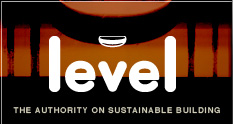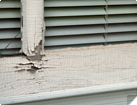Health and Safety
Taking care with materials, equipment and work procedures and dealing with hazards.
Lead paint
Until the mid-1960s when the health hazard of lead became more fully understood, lead pigments in oil-type binders were the most commonly used house paints in New Zealand.
The use of white lead in paint was banned in 1979, but some special-purpose paints still contain red lead – these should be clearly labelled.
The greatest risk occurs from older buildings that may still have a lead-based paint coating as they may have been repainted without previous layers of paint being removed.
Lead poisoning
Lead poisoning occurs when paint residue containing lead is swallowed or fumes are inhaled, for example when old lead paint is burnt off timber weatherboards. The effect of lead is cumulative – it builds up in the body, and if left untreated, can lead to brain damage and death. Symptoms of lead poisoning may include tiredness, poor sleeping patterns, moodiness, lack of appetite and stomach pains.
Lead absorption is a notifiable disease and males 45–64 account for the highest number of notifications, with 40% of work-related notifications in 2019 involving painters.
Lead-based paint removal
The removal of lead-based paint can result in harm to both the person removing the paint and people in the vicinity. Young children are particularly at risk from lead poisoning.
It is not possible to identify lead-based paint by its appearance. If a building is over 40 years old, assume that it has been painted with lead-based paint.
Inhalation of dust and fumes is the principal way lead enters the body, so paint debris must be prevented from becoming airborne during removal and clean-up.
Take the following precautions when removing lead-based paint:
- Use drop sheets when removing paint
- Keep children and pets away from the work area
- Wet sand to reduce dust
- Fit a power sander with a vacuum dust bag
- Wear a dust mask at all times
- Collect dust and debris as work proceeds and bag or contain in a suitable closed container (e.g. in strong plastic bags)
- Dispose in a place approved by the local authority.
If you wish to test whether a sample of paint includes lead, there are several options. Some paint stores sell a simple test kit that you can use with a chip of paint and some will even do a test for you, or can arrange one. There are also accredited laboratories that offer testing services for lead in chips of paint.
Paint is not the only source of lead in houses. In 2021, Master Plumbers, Gasfitters & Drainlayers tested five taps bought online and found three of the taps contained lead above the allowable limit. One was 11 times over the limit.
MBIE is amending Acceptable Solution G12/AS1 to limit the maximum allowable content of lead permitted in plumbing products. This applies to products containing copper alloys, in contact with potable water for human consumption. The revised acceptable solution will be published in November 2023 with a transition period to 1 September 2025.
Updated: 21 November 2022


